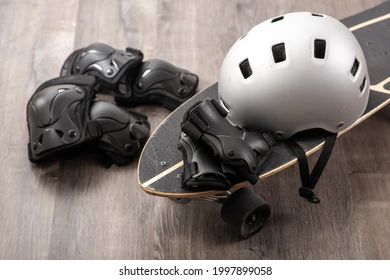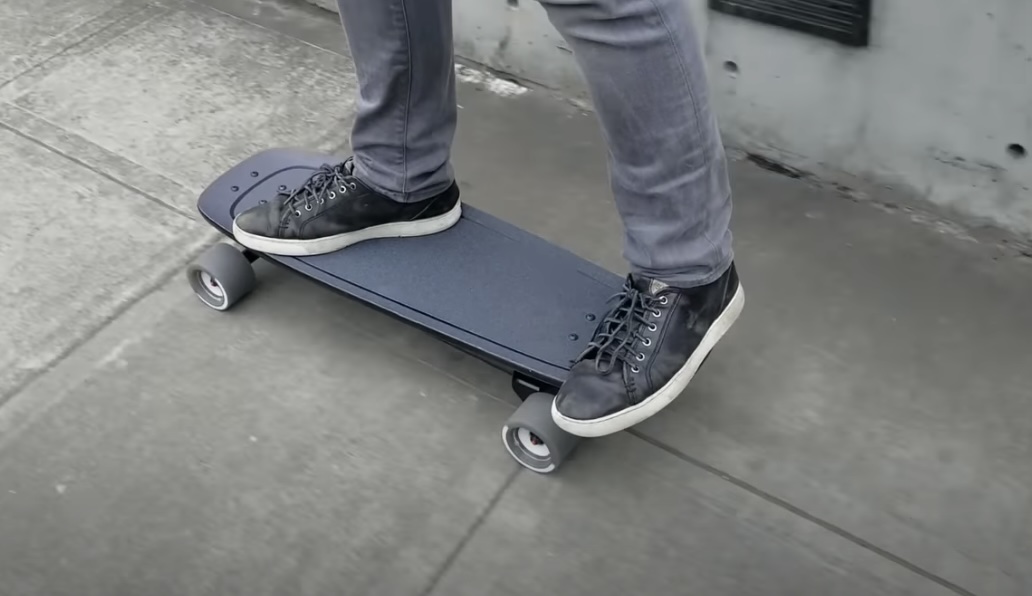Skateboarding is not just a sport, it’s a lifestyle. Whether in the city or in the park, go for speed or just cruise, you shall never afford yourself to be unsafe. Without a doubt a mandatory piece of safety equipment for each skater is a certified skateboard helmet. Here, we explore exactly why it is not just a smart option but a must to wear your helmet.
Why You Need a Skateboard Helmet
When it comes to skateboarding, safety should always be a top priority. A skateboard helmet is a safety gear that you can definitely spend your money on. Let’s now dive into why it is important for riders of all skill levels to have a proper skateboard helmet on.
The Role of a Skateboard Helmet
A skateboard helmet serves one primary purpose: helmet for your head during falls and impacts. Unlike other types of helmets, a skateboard helmet is devised to absorb low-force impacts, which are quite prevalent in skateboarding.Here’s why it’s indispensable:
- Protection from Head Injuries: The most obvious reason that a person wears a skateboard helmet is for an injury prevention on the head. Skateboards have various tricks that increase the chances of falling and colliding. Helmet can be seen as a barrier between your skull and any hard objects, this way will help to moderate the effects of serious injuries.
- Multi-Impact Resistance: In contrast to helmeting for activities such as bicycling or snowboarding, skateboard helmets are made to withstand multiple blows. Indeed, this is critical in skateboarding, where the riders often hit the ground pretty hard while practicing or trying to do something new. The engineering of a skateboard helmet design involves optimizing the energy dissipation and absorption of head impacts to reduce these injuries.
The Statistics Speak
Understanding the statistics related to skateboarding injuries underscores the importance of wearing a helmet:
- CDC Data: It is mentioned by the CDC that head injuries are responsible for the majority of serious injuries and fatalities in skateboarding. It underlines the increased risk of head trauma in skateboarding while suggesting the necessity of protective gear.
- Risk Reduction: A helmet for skateboarders really makes a difference in serious head injuries avoidance. The fact is that the research has already shown that helmet use can bring the risk down by the margin of 85%. Not only are those figures statistics, they also reflect real people who could have faced injuries or even death in unfortunate situations if they hadn’t worn headgear.
Understanding Skateboard Helmet Laws
Skateboard helmet laws exhibit considerable variation across different regions and countries, reflecting diverse approaches to safety regulations. While the specifics may differ, the overarching aim remains consistent: to mitigate the risk of head injuries among skateboarders.
Scope of Skateboard Helmet Laws
Skateboard helmet laws typically target specific demographics, primarily minors, although some jurisdictions extend regulations to encompass adults as well. The focus on minors stems from the recognition of their vulnerability to injuries and the imperative to safeguard their well-being. Here’s an overview of the scope:
| Demographic | Helmet Requirement |
| Minors | Mandatory in most regions |
| Adults | Optional in many jurisdictions |
As illustrated, the mandate for helmet usage is more stringent for minors, whereas adults often have the discretion to decide whether to wear helmets or not.
Enforcement Mechanisms
Enforcing skateboard helmet laws poses unique challenges, given the decentralized nature of skateboarding activities and the varying levels of compliance. Nonetheless, authorities employ several strategies to promote adherence to these regulations:
- Education Campaigns: Initiatives aimed at raising awareness about the importance of helmet usage and the potential consequences of non-compliance.
- Community Engagement: Collaborative efforts involving local skateboarding communities, law enforcement agencies, and advocacy groups to foster a culture of safety.
- Penalties and Fines: Imposition of penalties, such as fines or warnings, for individuals found in violation of helmet laws, particularly in areas with strict enforcement measures.
Impact of Skateboard Helmet Laws
Assessing the impact of skateboard helmet laws entails analyzing their effectiveness in reducing the incidence and severity of head injuries. Research studies provide valuable insights into the tangible benefits of these regulations:
- Reduction in Head Injuries: Evidence suggests that jurisdictions with helmet laws experience a decline in the number of head injuries among skateboarders, underscoring the preventive role of helmets.
- Cultural Shift Towards Safety: Helmet laws contribute to fostering a culture of safety within the skateboarding community, promoting responsible behavior and risk mitigation.
- Long-Term Health Benefits: By minimizing the occurrence of head injuries, helmet laws safeguard the long-term health and well-being of skateboarders, reducing the burden on healthcare systems.
Choosing the Right Skateboard Helmet

Alt: Various helmets
Selecting the appropriate skateboard helmet is essential for ensuring your safety and comfort while skateboarding. Here’s a comprehensive guide on how to choose the right helmet for your needs.
Key Features to Look For
When browsing for a skateboard helmet, it’s crucial to pay attention to several key features to ensure optimal performance and protection:
- Fit: The helmet should sit snugly on your head without feeling too tight. A proper fit is crucial for maximum protection. To determine the right size, measure the circumference of your head and refer to the manufacturer’s sizing chart.
- Ventilation: Adequate vents are essential for keeping your head cool, especially during long skate sessions. Proper ventilation prevents overheating and discomfort, allowing you to focus on your performance without distractions.
- Construction: Opt for helmets that are dual-certified, meaning they meet safety standards for both skateboarding and biking. Dual-certified helmets offer versatile protection, ensuring safety in various activities.
- Style: While safety is paramount, choosing a helmet style that aligns with your personal taste can enhance your overall skateboarding experience. Many helmets come in a range of colors and designs, allowing you to express your individuality while staying protected.
Types of Skateboard Helmets
Skateboard helmets are available in different styles, each offering unique features and levels of protection:
- Classic Skate Helmets: These helmets are characterized by their round, smooth outer shell and minimal vents. Classic skate helmets provide basic protection and are suitable for casual skateboarding.
- Full-Cut Helmets: Full-cut helmets offer additional coverage around the ears and back of the head, providing enhanced protection against impacts. This extra coverage makes them ideal for riders who prioritize safety during aggressive skateboarding or vert riding.
- Half-Shell Helmets: The most common style, half-shell helmets resemble traditional bike helmets but are specifically designed to withstand multiple impacts. They offer a balance of protection and ventilation, making them suitable for various skateboarding disciplines.
Maintaining Your Skateboard Helmet
Proper maintenance of your skateboard helmet is crucial for ensuring its longevity and continued effectiveness in protecting your head during skateboarding activities. Here are some detailed maintenance tips to keep your helmet in top condition:
Regular Inspection
Regularly inspecting your skateboard helmet is essential for identifying any signs of wear or damage that may compromise its protective capabilities. Follow these steps during your inspection:
- Check for Cracks: Thoroughly examine the outer shell of the helmet for any cracks or fractures, paying close attention to areas that may have experienced impact. Even hairline cracks can weaken the helmet’s structure, so it’s crucial to replace the helmet if any damage is detected.
- Look for Dents: Inspect the surface of the helmet for any dents or deformities. While helmets are designed to absorb impact by deforming slightly, significant dents may indicate structural damage that compromises their ability to provide adequate protection.
- Assess Inner Padding: Remove the helmet’s inner padding and inspect it for signs of wear, tearing, or deterioration. The padding plays a crucial role in ensuring a comfortable and secure fit, so any damage should be addressed promptly.
- Check Chin Straps: Examine the chin straps for fraying, stretching, or signs of weakening. The straps should securely fasten the helmet to your head without excessive slack.
Cleaning
Proper cleaning helps maintain the hygiene and integrity of your skateboard helmet. Follow these steps to clean your helmet effectively:
- Use Mild Soap and Water: Clean your helmet regularly with a mild soap and water solution. Gently scrub the surface of the helmet with a soft cloth or sponge to remove dirt, sweat, and grime.
- Avoid Harsh Chemicals: Refrain from using harsh chemicals or solvents when cleaning your helmet, as they can degrade the materials and compromise the helmet’s structural integrity.
- Dry Thoroughly: After cleaning, allow the helmet to air dry completely before storing it. Avoid exposing the helmet to direct sunlight or heat sources, as prolonged exposure can cause the materials to degrade.
Storage
Proper storage helps prevent damage and prolongs the lifespan of your skateboard helmet. Follow these storage guidelines:
- Cool, Dry Location: Store your skateboard helmet in a cool, dry place away from direct sunlight and moisture. Excessive heat and humidity can accelerate the degradation of helmet materials, so choose a well-ventilated storage area.
- Avoid Compression: Avoid storing heavy objects on top of your helmet, as this can cause deformation and compromise its protective capabilities.
When to Replace Your Skateboard Helmet

It’s essential to know when to replace your skateboard helmet:
After a Severe Impact
After experiencing a significant impact while skateboarding, it’s crucial to assess the condition of your helmet thoroughly. Even if there are no visible signs of damage to the exterior, the integrity of the helmet may be compromised. Here’s what to consider:
- Signs of Damage: Inspect the helmet for cracks, dents, or any irregularities in the shell or foam liner.
- Impact Assessment: Even if the damage isn’t immediately apparent, the inner foam liner may have sustained damage, reducing its ability to absorb impact effectively.
- Safety Priority: Prioritize your safety above all else. If there’s any doubt about the helmet’s ability to provide adequate protection, replace it immediately.
- Professional Evaluation: In some cases, it may be prudent to have a professional evaluate the helmet, especially if the impact was severe. They can conduct more thorough testing to determine if the helmet’s integrity has been compromised.
Periodically Every 3-5 Years
Regular replacement of your skateboard helmet is essential to ensure ongoing protection. Over time, materials degrade, impacting the helmet’s ability to safeguard your head. Consider the following:
- Wear and Tear: Exposure to elements like sunlight, sweat, and moisture can gradually weaken the helmet’s structure.
- Material Degradation: The foam liner, crucial for impact absorption, can lose effectiveness with age, compromising your safety.
- Manufacturer Recommendations: Most helmet manufacturers advise replacing your helmet every 3-5 years, regardless of visible damage, to maintain optimal safety.
- Technological Advances: Helmet technology continues to improve over time. Newer models may offer enhanced protection and comfort compared to older ones. Updating your helmet periodically ensures you benefit from these advancements.
Additional Considerations
In addition to impact and periodic replacement considerations, several factors can affect the lifespan and effectiveness of your skateboard helmet. Take note of the following:
- Frequency of Use: Avid skateboarders who use their helmets frequently may need to replace them more often due to accelerated wear and tear.
- Environmental Factors: Extreme temperatures and humidity can accelerate material degradation. Proper storage in a cool, dry place can prolong the helmet’s lifespan.
- Certification Standards: Ensure your helmet meets safety standards established by organizations like the CPSC or CE. Look for certification labels inside the helmet to verify compliance.
- Proper Care: Follow the manufacturer’s care instructions to extend the life of your helmet. Avoid exposure to harsh chemicals and clean it regularly with mild soap and water.
- Personal Preference: As helmets age, they may become less comfortable or no longer fit properly. If you experience discomfort or notice the fit isn’t as snug as it once was, it’s time to consider replacing your helmet.
Conclusion
Investing in a good-quality skateboard helmet is an investment in your safety and future in skateboarding. Don’t overlook the importance of this essential piece of equipment. With the right skateboard helmet, you can ride with confidence, knowing that you are protected from the most common and severe skateboarding injuries. Remember, a smart skater is always a helmeted skater!
FAQ
While some helmets are dual-certified for biking and skateboarding, not all bike helmets are suitable for skateboarding. Skateboard helmets are designed to withstand multiple impacts, which is crucial given the nature of skateboarding falls.
Yes, skateboard helmets are available in various sizes, including those designed for children. It’s crucial to choose a helmet that fits properly to ensure maximum protection for younger skaters.
A properly fitting skateboard helmet should feel snug but not uncomfortably tight. It should sit level on your head and should not rock back and forth or side to side during movement.
Many skaters personalize their helmets with stickers, paints, or other decorations. However, be cautious with what materials you use, as some adhesives and paints can weaken the helmet’s material.







Leave a Reply